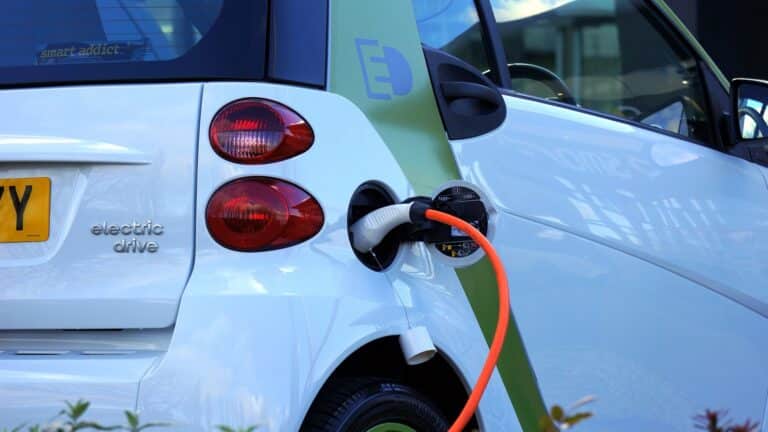This report represents the research and views of the author. It does not necessarily represent the views of the Center on Global Energy Policy. The piece may be subject to further revision. Contributions to SIPA for the benefit of CGEP are general use gifts, which gives the Center discretion in how it allocates these funds. More information is available at Our Partners. Rare cases of sponsored projects are clearly indicated. For a full list of financial supporters of the Center on Global Energy Policy at Columbia University SIPA, please visit our website at Our Partners. See below a list of members that are currently in CGEP’s Visionary Annual Circle.
-
CGEP’s Visionary Annual Circle
-
(This list is updated periodically)
Jay Bernstein
Breakthrough Energy LLC
Occidental Petroleum Corporation
Executive Summary
New policies are needed to achieve the net-zero emissions required to address climate change. To succeed, these policies must lead directly to swift and profound abatement of greenhouse gas (GHG) emissions. Policies that appear effective on the surface too often have little real impact or are costly compared to alternatives. Governments, investors, and decision makers require better tools focused on understanding the real emissions impacts and costs of policies and other measures in order to design the most effective policies required to create a net-zero world.
This paper, from the Carbon Management Research Initiative at Columbia University’s Center on Global Energy Policy, puts forward a levelized cost of carbon abatement, LCCA, an improved methodology for comparing technologies and policies based on the cost of carbon abatement. LCCA measures how much CO2 can be reduced by a specific investment or policy, taking into account relevant factors related to geography and specific asset. It calculates how much an investment or policy costs on the basis of dollars per ton of emissions reduced. Previous marginal or levelized cost methodologies that assess carbon reduction options often failed to consider the specific contexts that determine the real, all-in costs of a policy and the real, all-in impacts on emissions. These costs and impacts can vary depending on the contexts and details of geography, existing infrastructure, timing, and other factors. LCCA attempts to improve understanding of the real climate costs and benefits by including specific and local CO2 reductions in all estimations and consistently applying standard financial metrics that more accurately represent and compare costs.
Investors and policy makers interested in climate, energy, and decarbonization must balance many competing options. The scenarios and analyses presented in this report can provide a foundation for wider analytical applications, and can help focus investments in innovation for hard-to-abate sectors, determine essential infrastructure required to facilitate market uptake, and estimate the value of grants in deployment. If the LCCA is not estimated, decision makers will not know the value of their policies and investments in terms of achieving greenhouse gas reductions and their carbon goals or the opportunity costs of taking one path over another. Finally, although carbon abatement costs are only one consideration of many in crafting climate policy (e.g., jobs, trade, domestic security), LCCA analysis will deploy efficient and effective approaches of GHG reduction and help avoid waste.
This paper uses four scenarios to illustrate the discipline and value of LCCA analysis: first, the $/ton cost of using new solar power (utility or rooftop) to displace power-sector emissions in one market (California); second, the $/ton costs of new rooftop solar generation in several states with different solar resources, grid mixes, and policy environments; third, the $/ton cost of various technology options to decarbonize a range of primary iron and steel production methods; and fourth, the $/ton cost associated with sustainable aviation fuels and direct air capture and storage of CO2.
The analysis provides insight into (a) the highest value for carbon reduction, (b) the relative discrete costs and benefits for decarbonization options, and (c) the potential shortfalls in policy or portfolio goals. In this context, the LCCA estimates for even simple cases can prove complicated depending on how emissions reductions are achieved. For example, our first scenario finds the costs of reducing emissions by replacing existing power generation in California with solar PV range from $60/ton (utility solar PV displacing natural gas power generation) to $300/ton (rooftop solar replacing a grid-average mix of generation) to more than $10,000/ton (any solar replacement of nuclear or hydropower). These large ranges are contingent on policy, investment, and/or technical decisions. Other key examples include:
- The value of learning by doing is substantial for solar deployment, suggesting that investment in innovation and supply chains can be worth $30–100/ton.
- When 100 percent of rooftop solar deployment is assumed to be associated with the solar investment tax credit (ITC), the abatement costs range from $31 (Texas) to $105 (New Jersey) for the same technology. If the ITC accounts for less than 100 percent deployment (i.e., less than 100 percent additionality), the costs are higher.
- When 100 percent of rooftop solar deployment is associated with renewable energy certificate programs, the costs can be much greater than $200/ton CO2.
- The value to a ratepayer of an incentive is the opposite of the cost to the subsidizing party; LCCA can help clarify and measure who pays.
- Hard-to-abate sectors can be defined on the basis of their LCCA—specifically, when more than 75 percent of CO2 reductions in a sector cost more than $200/ton under a set of reasonable assumptions.
- Most options to decarbonize primary iron and steel cost more than $150/ton, with carbon capture and storage and marginal zero-carbon electrification being substantial exceptions.
- Virtually all sustainable aviation fuels cost more than $300/ton for abatement and can only do 50 percent of the job due to blend-wall limits. Direct air capture today appears to be a cost-advantaged alternative to decarbonizing aviation.
The methodology put forward is suited to both static and dynamic aspects of CO2 reduction (e.g., learning by doing, marginal supply curves), can assess technology options (e.g., replacing existing power generation) and policy options (e.g., tax credits), and is keyed to tons reduced relative to a base case. It should be considered one specific index or metric, and ultimately should be one of many considerations in designing policy or investments.





